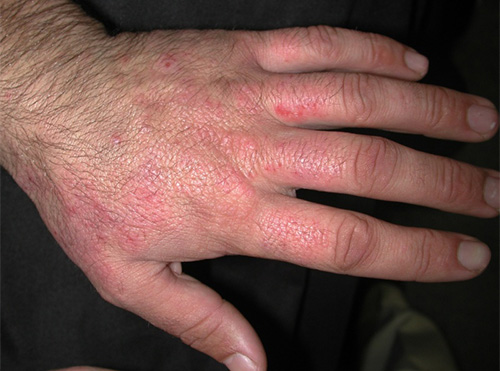Presentation of contact dermatitis
Contact dermatitis is the most common occupational skin condition, and is a significant cause of time lost from work and long-term disability. It is caused by skin contact with external agents, which may be present at home, work or play. Most cases involve the hands. Contact reactions most commonly present as dermatitis, but can manifest in other ways (eg urticaria, photosensitivity, acne).
Contact dermatitis can have an irritant or allergic cause. At least 70% of cases are caused by an irritant, but irritant dermatitis also increases the risk of developing a contact allergy. It is not uncommon for a patient to have both an endogenous form of dermatitis (eg atopic dermatitis) and contact dermatitis. Clinical or histological features do not reliably distinguish between irritant contact dermatitis, allergic contact dermatitis and endogenous dermatitis.
Skin irritation causing contact dermatitis may result from:
- single exposure to a high concentration of a highly irritating chemical—affects most people regardless of skin type
- repeated exposure to a weaker irritant—more common, particularly in people with sensitive skin.
A cumulative irritant contact dermatitis can occur after a few months or several years, depending on the nature of the irritant and the sensitivity of the skin. For example, cleaning professionals may suddenly develop hand dermatitis, despite no change in cleaning products used or exposure to other irritants.
Allergens are the cause of approximately 20% of contact dermatitis cases. Approximately 8% of the population is allergic to nickel (higher prevalence has been reported overseas)Australian Society of Clinical Immunology and Allergy (ASCIA), 2019Uter, 2020Warshaw, 2019, and 1 to 3% to an ingredient in cosmetics. Rubber glove dermatitis presents most commonly as delayed allergic contact dermatitis, but can also present as an immediate hypersensitivity reaction (eg latex-related).
See Contact dermatitis for photos of contact dermatitis.


